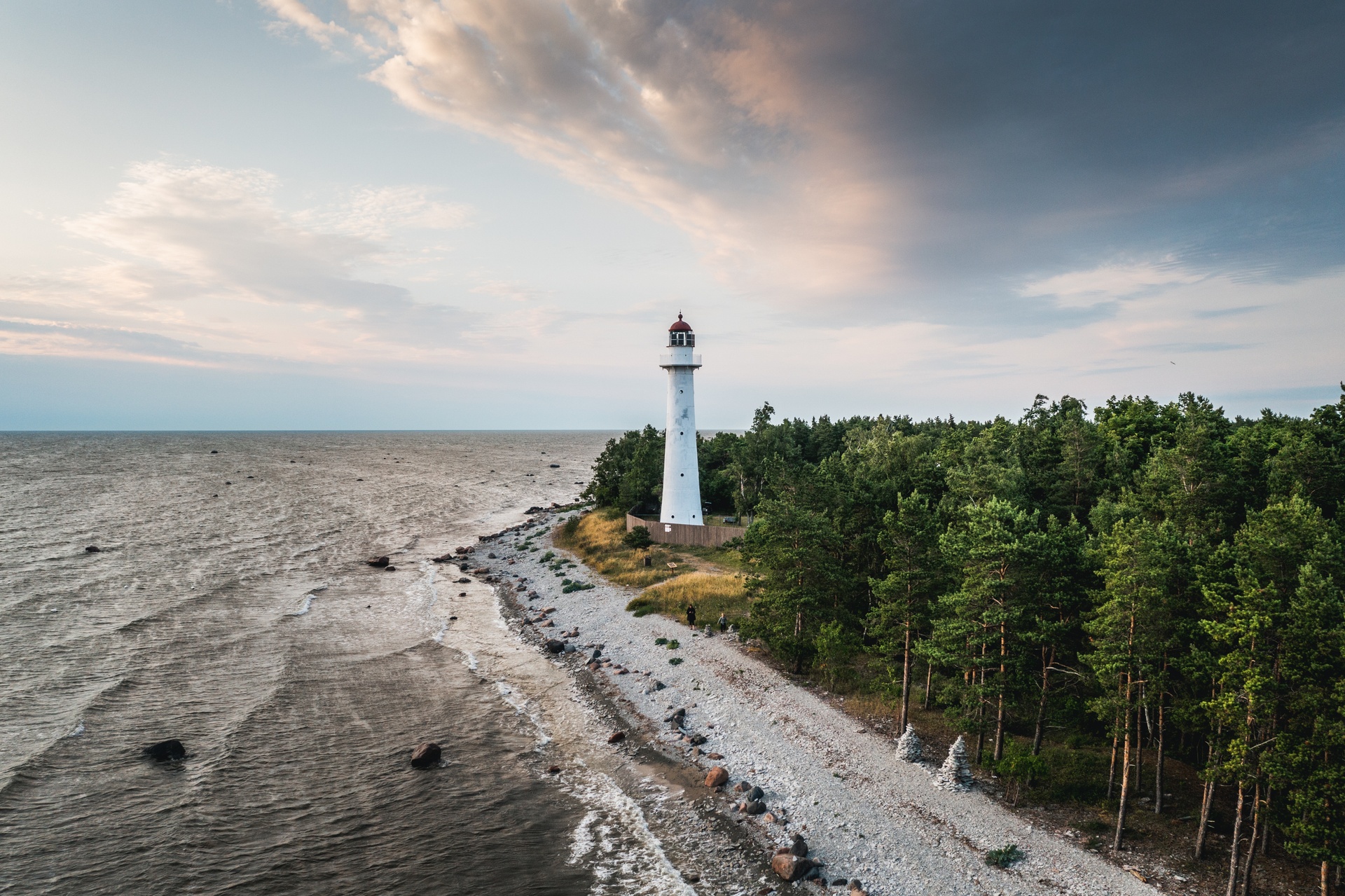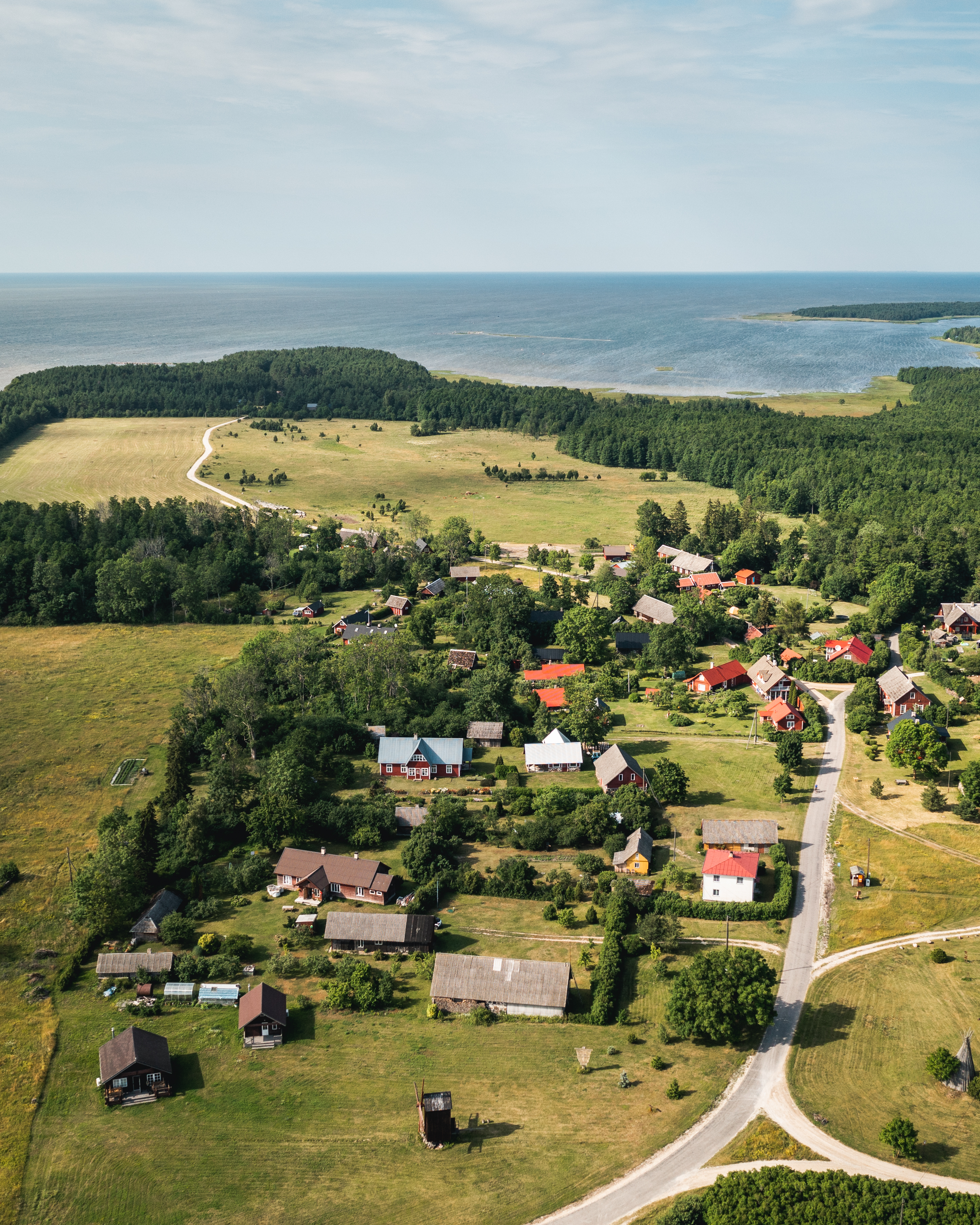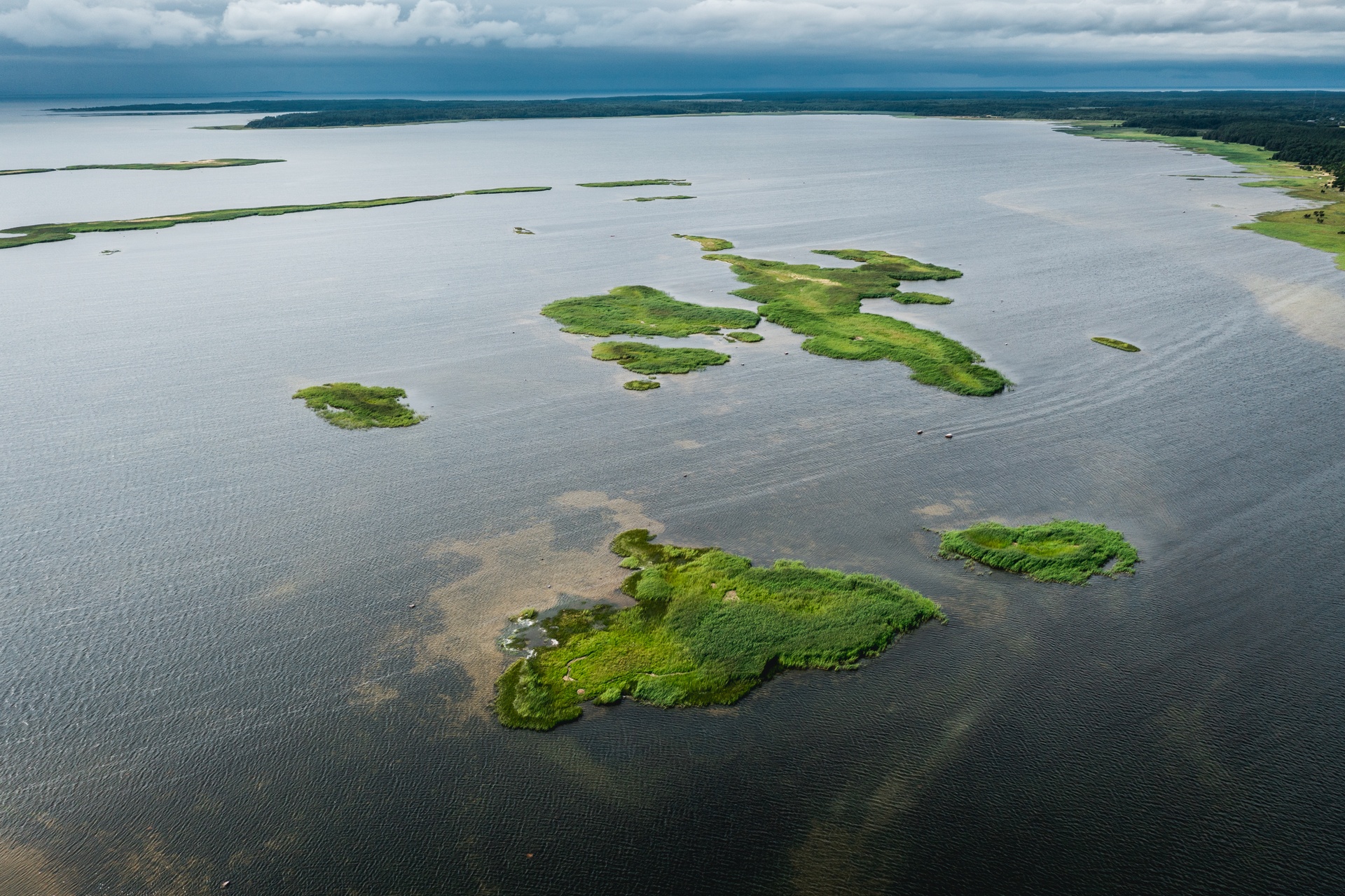
Vormsi Island
Estonia's fourth-largest island offers endless opportunities for peace and quiet and is a must-see if you're interested in Estonia's Coastal Swedes.
The name "Vormsi" comes from the Swedish name "Ormsö," which means "snake island."
But don't let the name dissuade you from visiting! While it's true you may come across a European viper or grass snake in Estonia, they are far more afraid of humans than we are of them. Depending on the season of your visit, you are more likely to spot clouds of feathers from migrating birds or white-tailed eagles and the common crane, both of which nest on the island.
Island history and Coastal Swedish heritage
About 350 people call Vormsi home, and Estonia's Coastal Swedish culture has strong roots here. St. Olav's Church — known for its tower-less design — was built in the 14th century. The cemetery outside the church has over 330 sun cross grave markers, the largest collection of sun crosses in the world. Each inscription and design is unique, as they were carved by the local farmers, not by craftsmen.
For a good overview of the lifestyle of Coastal Swedes, you can visit the Vormsi Farm Museum, which is a fully reconstructed Coastal Swedish farm based on photographs and recollections of Coastal Swedes who escaped the island during the Soviet and German occupations of the early twentieth century.

Photo author: Priidu Saart
Photo author: Priidu Saart
How to get around
The juniper fields, coastal meadows, erratic boulders, and lighthouses of Vormsi are best discovered on foot or by bicycle.
The island is accessible by car ferry from the mainland port of Rohuküla, less than 10 kilometers from Haapsalu. If you wish to leave your car on the mainland, there is a free, spacious parking lot at the port where you can park your car safely. Once you arrive at Port Sviby on Vormsi, you can rent a bike or an electric scooter there or from the farm museum.
Always check schedules before traveling and purchase tickets in advance. Visitors coming in with their own boat should contact Sviby Harbor for more information.
Exploring on foot
In addition to exploring the cultural heritage of the Coastal Swedes, the island is perfect for day hikes. A five-kilometer-long hiking trail runs along the Rumpo Peninsula, giving you a chance to see rare lichens and observe coastal birds. The Saxby limestone outcrops reveal fossils of creatures that lived in the waters of the tropical shelves millions of years ago. There is a two-kilometer-long hiking trail near Hullo that explores Lake Prästvike and the springs that feed it. Prästvik in Swedish means "the priest's bay" — in the 17th century, the island's priest held exclusive fishing rights for the lake.
Saxby Lighthouse is open to visitors during the summer; it's worth a visit in the daytime to climb to the top or in the late evening to catch the spectacular sunset from the beach.

Photo author: Priidu Saart
The sun cross grave markers in Vormsi Cemetery
The island has been inhabited for centuries. Learn more about Vormsi's fascinating past by visiting the Vormsi Farm Museum and St. Olav's Church.
Get inspired
Last updated
07.11.2025

